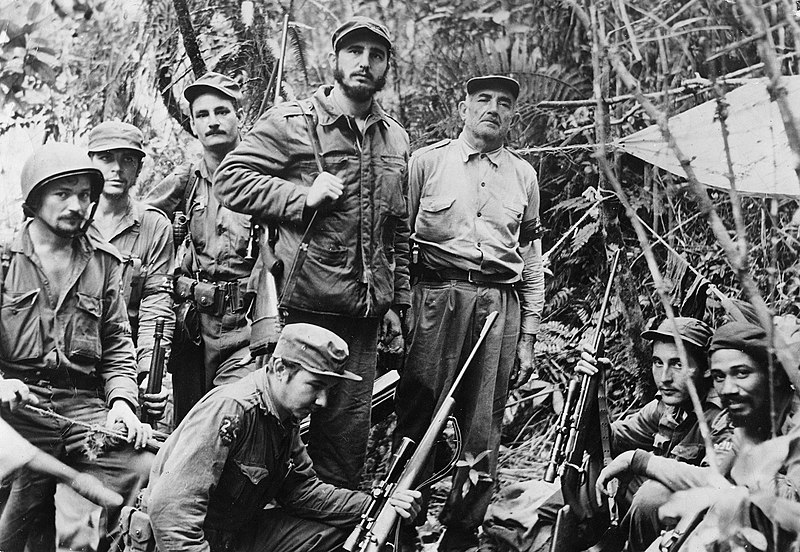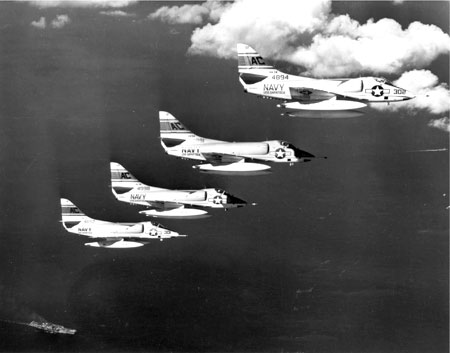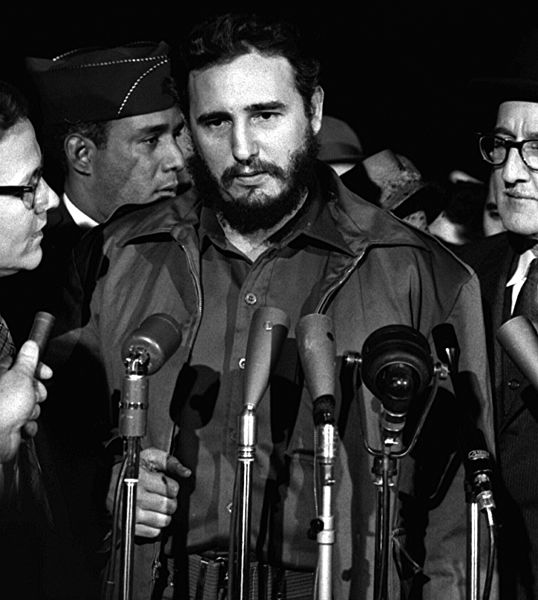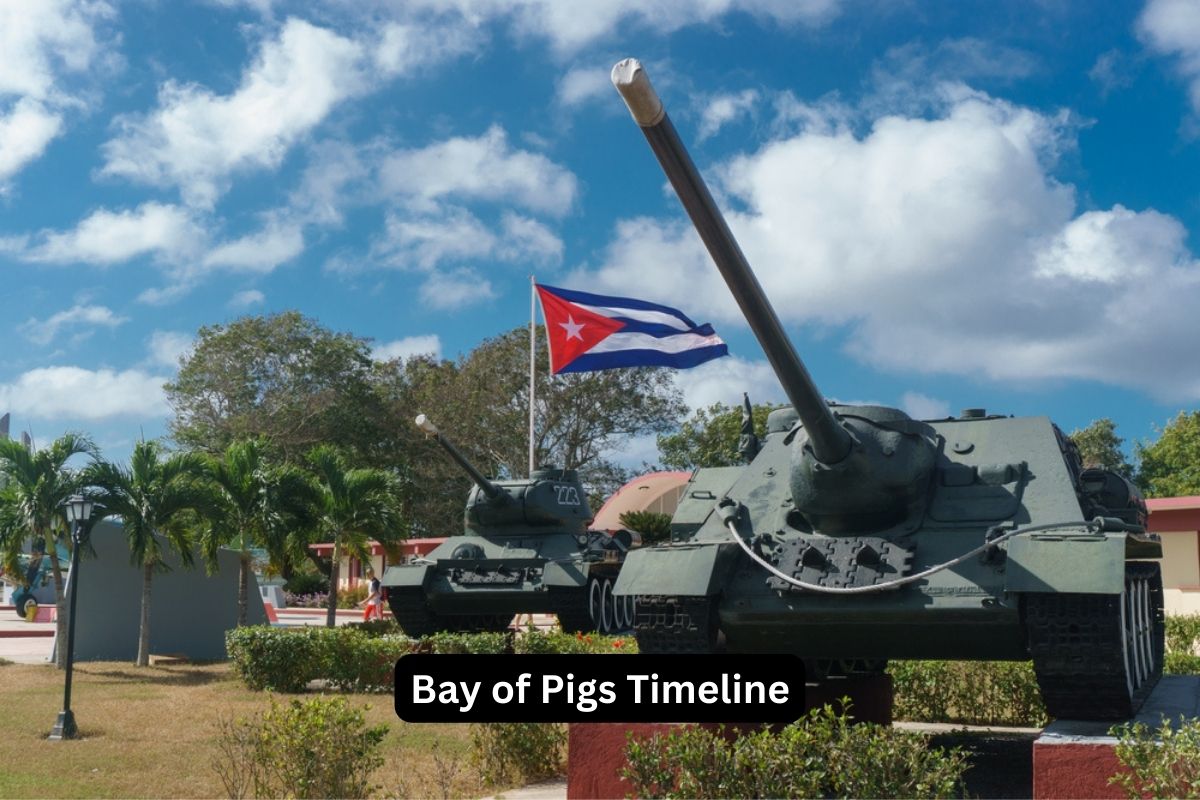The Bay of Pigs invasion stands as a pivotal moment in the annals of Cold War history, marked by grand ambitions, covert operations, and ultimately, catastrophic failure.
In the early 1960s, against the backdrop of escalating tensions between the United States and the Soviet Union, Fidel Castro’s Cuba emerged as a focal point of geopolitical rivalry.
The overthrow of Cuban dictator Fulgencio Batista by Castro’s revolutionary forces in 1959 set the stage for a dramatic showdown between communism and capitalism in the Western Hemisphere.
This article delves into the events leading up to the ill-fated invasion, the execution of the operation itself, and the enduring repercussions that continue to shape the relationship between the United States and Cuba to this day.
From clandestine CIA plots to Castro’s defiant resistance, the Bay of Pigs saga serves as a cautionary tale of the perils of covert intervention and the complexities of Cold War politics.
| Date | Event |
|---|---|
| January 1959 | Fidel Castro’s forces overthrow Cuban dictator Fulgencio Batista, leading to the establishment of a socialist government in Cuba. |
| Early 1960 | The United States, under President Dwight D. Eisenhower, becomes increasingly concerned about Castro’s ties with the Soviet Union and the spread of communism in the Western Hemisphere. |
| March 17, 1960 | President Eisenhower approves a CIA plan to train and equip Cuban exiles to overthrow Castro’s government. This plan becomes known as Operation Pluto. |
| April 1961 | Under the newly inaugurated President John F. Kennedy, the plan initiated by Eisenhower is executed. The invasion force of around 1,400 Cuban exiles, trained and funded by the CIA, lands at the Bay of Pigs in Cuba. |
| April 17, 1961 | The invasion begins, but it quickly encounters problems. The Cuban exile forces face strong resistance from Castro’s military, and the operation fails to gain the anticipated support from the Cuban population. |
| April 19, 1961 | With the invasion faltering and facing certain defeat, President Kennedy decides not to provide the air support that had been initially planned, fearing direct involvement would escalate the situation and risk a confrontation with the Soviet Union. |
| April 20, 1961 | The Cuban government, with the support of Soviet Premier Nikita Khrushchev, declares victory over the invading forces. The remaining Cuban exiles are either killed, captured, or forced to retreat. |
| Aftermath | The Bay of Pigs invasion was a humiliating defeat for the United States and a major propaganda victory for Castro’s government. It solidified Castro’s grip on power in Cuba and increased tensions between the United States and the Soviet Union during the Cold War. |
| Repercussions | The failure of the Bay of Pigs invasion led to a reassessment of U.S. covert operations and foreign policy strategies. It also further strained relations between the United States and Cuba, contributing to the ongoing hostility between the two nations for decades to come. |
Timeline of the Bay of Pigs
January 1959: Fidel Castro’s forces overthrow Cuban dictator Fulgencio Batista
Fidel Castro’s forces, including guerrilla fighters such as Ernesto “Che” Guevara, successfully overthrow the Cuban dictator Fulgencio Batista.
Also Read: Facts About the Bay of Pigs
Batista’s regime was known for its corruption, repression, and close ties to the United States. Castro’s revolutionaries, inspired by nationalist and socialist ideals, establish a new government in Cuba with Fidel Castro as its leader.

Early 1960: The United States becomes increasingly concerned about Castro’s ties with the Soviet Union and the spread of communism
Fidel Castro’s revolutionary government embarks on a series of reforms, including land redistribution, nationalization of key industries, and agrarian reforms.
Also Read: Cuban Missile Crisis Facts
These measures aimed to reduce economic inequality and address longstanding grievances among the Cuban population. However, they also alarmed the United States, which viewed Castro’s government as a potential communist threat in its own backyard.
March 17, 1960: President Eisenhower approves a CIA plan to train and equip Cuban exiles to overthrow Castro’s government
Amid escalating tensions between the United States and Cuba, President Dwight D. Eisenhower approves a covert CIA operation aimed at overthrowing Fidel Castro’s government.
The plan, codenamed Operation Pluto, involves recruiting and training Cuban exiles to form a paramilitary force. The CIA also begins efforts to sabotage the Cuban economy and isolate Castro diplomatically.
Operation Pluto lays the groundwork for what would later become the Bay of Pigs invasion. This operation reflects the growing Cold War rivalry between the United States and the Soviet Union, with Cuba becoming a focal point for geopolitical competition in the Western Hemisphere.
April 1961: The invasion force of around 1,400 Cuban exiles, trained and funded by the CIA, lands at the Bay of Pigs in Cuba
Under the newly inaugurated President John F. Kennedy, the plan initiated by Eisenhower is executed. The invasion force, composed of around 1,400 Cuban exiles, is trained and equipped by the CIA.
Their objective is to overthrow Fidel Castro’s government by launching a surprise attack on Cuba. The invasion force lands at the Bay of Pigs, a remote area on the southern coast of Cuba, on April 17, 1961.
April 17, 1961: The invasion begins, but it quickly encounters problems
The invasion begins as the Cuban exile forces land at the Bay of Pigs. However, they encounter numerous obstacles and setbacks from the outset. The element of surprise is lost, and the Cuban military quickly mobilizes to repel the invaders.
The CIA’s assumption that the Cuban population would rise up in support of the exiles proves to be incorrect, as Castro’s government maintains strong popular support. Additionally, the lack of adequate air support and communication breakdowns hamper the effectiveness of the invasion.

April 19, 1961: With the invasion faltering and facing certain defeat, President Kennedy decides not to provide the air support that had been initially planned
With the invasion faltering and facing imminent defeat, President Kennedy decides not to provide the air support that had been initially planned.
This decision is made to avoid direct involvement in the conflict and to prevent an escalation of tensions with the Soviet Union, which had pledged support for Cuba. Without air cover, the Cuban exile forces are unable to hold their ground, and many are captured or killed by Castro’s troops.
April 20, 1961: The Cuban government, with the support of Soviet Premier Nikita Khrushchev, declares victory over the invading forces
The Cuban government, with the support of Soviet Premier Nikita Khrushchev, declares victory over the invading forces at the Bay of Pigs.
Despite initial setbacks and challenges, Castro’s military successfully repels the invasion, capturing or killing many of the Cuban exiles involved. The remaining invaders are forced to retreat, and the operation is deemed a humiliating failure for the United States.
Aftermath: The Bay of Pigs invasion was a humiliating defeat for the United States and a major propaganda victory for Castro’s government
The Bay of Pigs invasion represents a significant setback for the United States and a major propaganda victory for Fidel Castro’s government. It solidifies Castro’s grip on power in Cuba and strengthens his position as a symbol of resistance against U.S. imperialism in Latin America.
The failure of the invasion exposes weaknesses in U.S. intelligence, military planning, and decision-making processes. It also leads to a reassessment of U.S. foreign policy strategies, particularly regarding covert operations and intervention in foreign conflicts.

Repercussions: The failure of the Bay of Pigs invasion led to a reassessment of U.S. covert operations and foreign policy strategies
The failure of the Bay of Pigs invasion has far-reaching repercussions for U.S.-Cuba relations and broader Cold War dynamics. In Cuba, the failed invasion bolsters Castro’s legitimacy and consolidates support for his revolutionary government. It also deepens Cuba’s alignment with the Soviet Union, as Castro seeks military and economic assistance to defend against future U.S. aggression.
For the United States, the Bay of Pigs becomes a cautionary tale about the perils of overreaching in foreign affairs and underestimating the resolve of adversaries. It leads to a period of soul-searching and reevaluation within the U.S. government, as policymakers grapple with the implications of the failed intervention.
The Bay of Pigs further exacerbates tensions between the United States and Cuba, contributing to decades of hostility and antagonism between the two countries. The failed invasion cements Cuba as a focal point of Cold War geopolitics and sets the stage for future confrontations and crises in the region.
